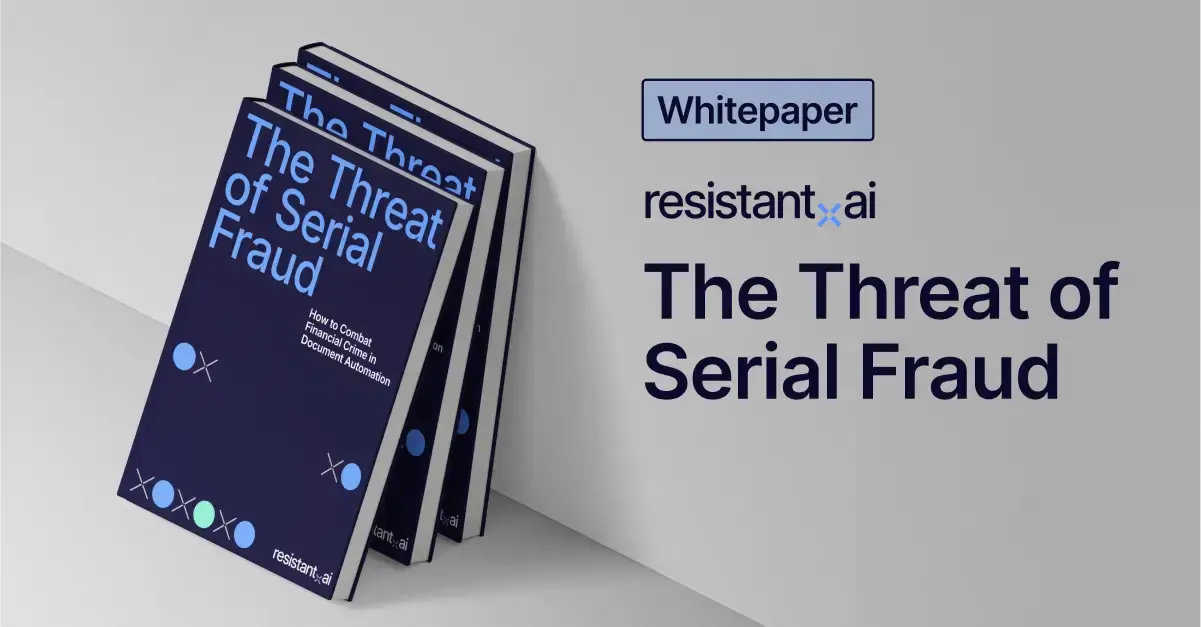
You might be interested in










Digital financial crimes are in a constant state of change and innovation, and we here at Resistant AI pride ourselves on not just staying up to date but staying one step ahead of those who commit them. That's why today we're unveiling a new product: Identity Forensics will augment the financial crime and fraud detection and prevention capabilities of our existing products to offer organizations the strongest means of fighting back against today's tech-savvy serial fraudsters.
Put simply, added behavior and PII analysis bridges together our existing Document Forensics and Transaction Forensics for end-to-end, perpetual KYC. Companies using Identity Forensics therefore receive an ongoing evaluation of the risk each customer may pose, from before they start an onboarding process through to real-time transaction monitoring.
Put another way: Identity Forensics not only helps you determine whether your new incoming customers are who they claim to be, it also helps you remain certain that they remain who they claim to be. And it does it all in real time, at scale.
As the name suggests, our Document Forensics looks deep within each document a customer uploads, examining both the visual and technical features of a file from over 500 different angles. Transaction Forensics examines financial transactions beyond a simple rules-based paradigm, highlighting anomalous patterns by individuals as well as between them. But Identity Forensics is more than just using Document Forensics and Transaction Forensics together on the same system: additional personal and behavioral data, collected by the client and pertaining to how those customers act and who they are, is added in to make for a far richer mix.
Such behavioral and PII data can be drawn from nearly any touchpoint where a customer interacts with a digital financial service. From device fingerprints to how forms are filled in and much more, these behavioral factors build up more comprehensive pools of data to draw on. In combination with standard information gleaned from document uploads and transaction patterns, these added dimensions provide additional points of comparison to establish what an individual's normal activities look like, what are anomalous activities, and how an individual fits together with other accounts within an organization. The more a single customer interacts with a system, the more data becomes available to define normal versus abnormal, and the same is true as greater numbers of customers interact with a system overall.
This three-pronged approach creates a robust, multilayered defense against bulk account creations, account takeovers, synthetic money muling, organized crime rings, and many other criminal behaviors. And since Identity Forensics relies on finding signals through the noise rather than solely on rigid rules or databases, previously undefined or unnoticed suspicious behaviors can come to light too, whether our AI has seen such behaviors before or not.
Results have already been astounding for the first clients who piloted Identity Forensics. All saw the number of identified fraud and suspicious activities cases double even over our own previous forensic examinations. In some situations the potential is still greater: introducing behavioral aspects within Identity Forensics can uncover 190% more instances of financial criminals trying to defraud your company.
Visit our dedicated Identity Forensics page to learn more, or reach out to our team directly to arrange a demo.


